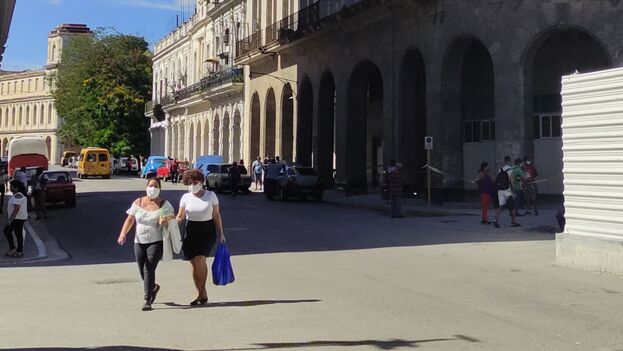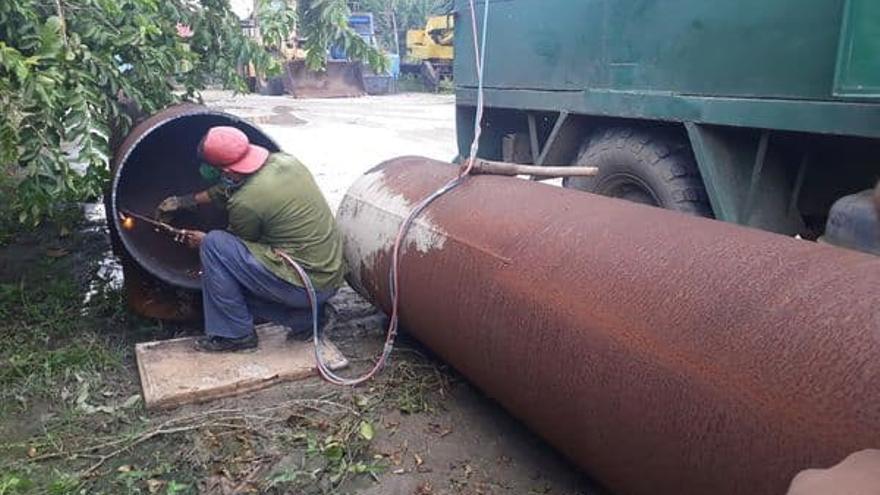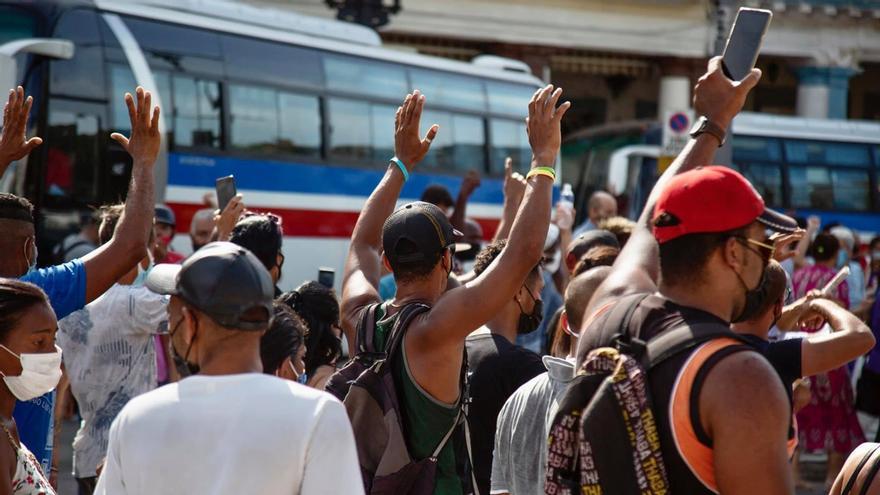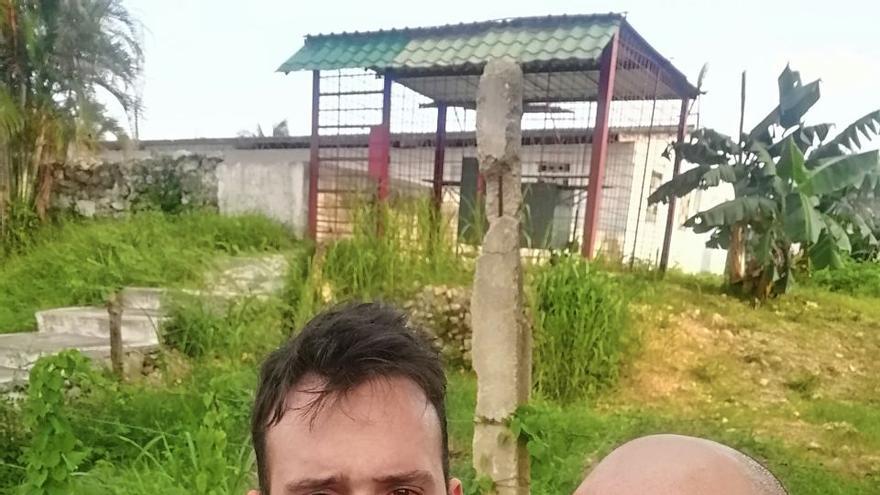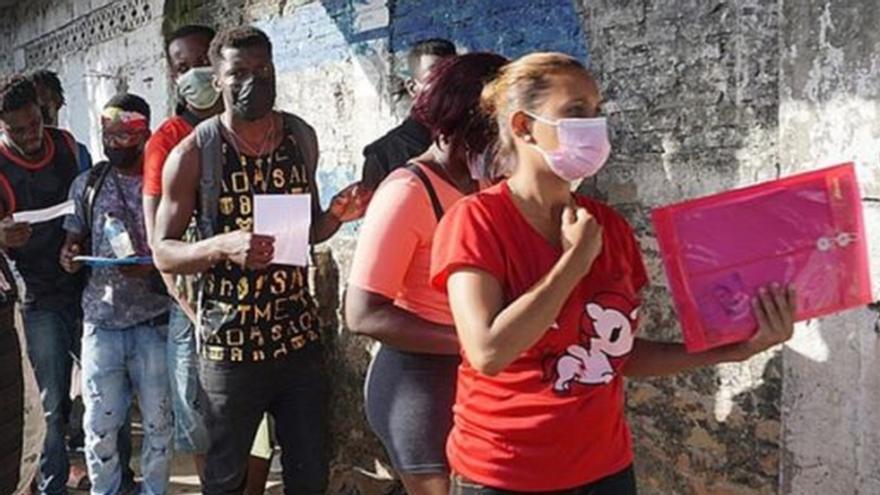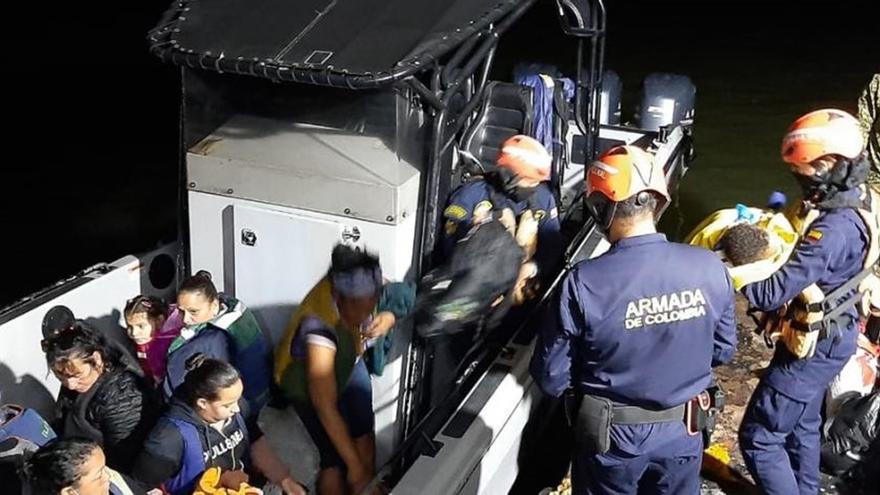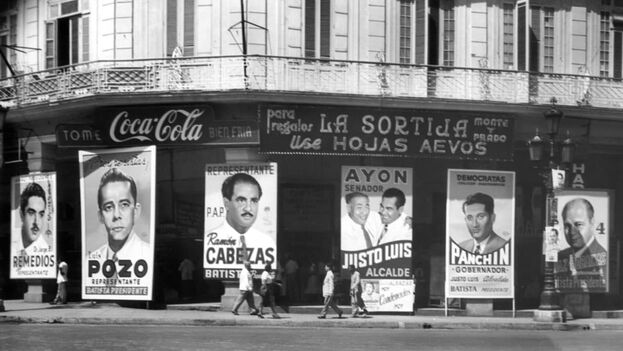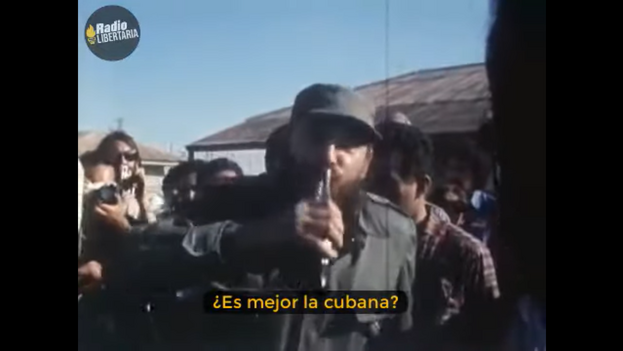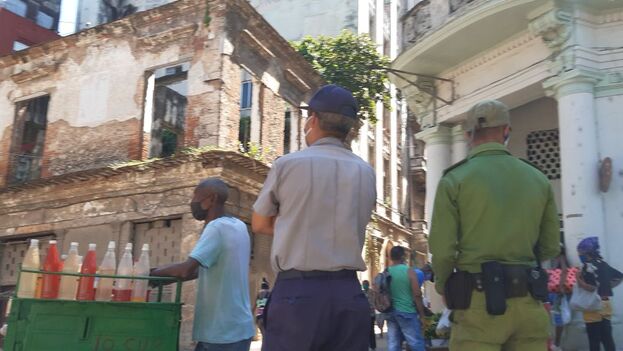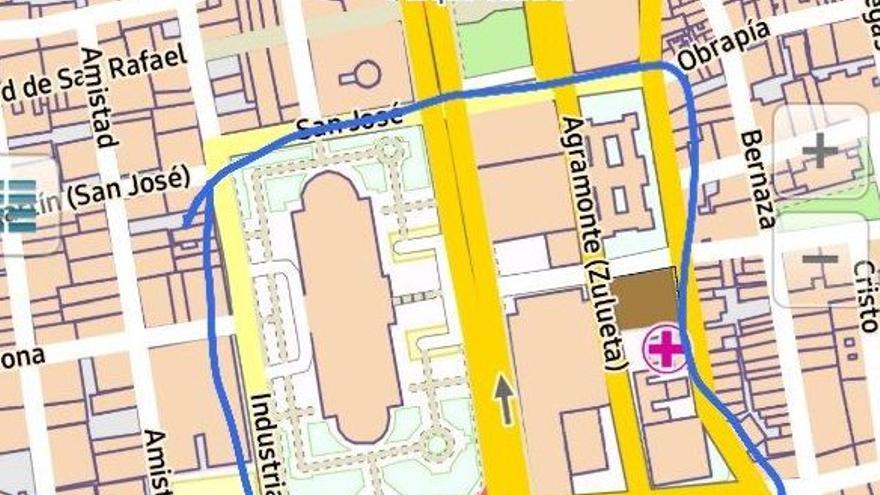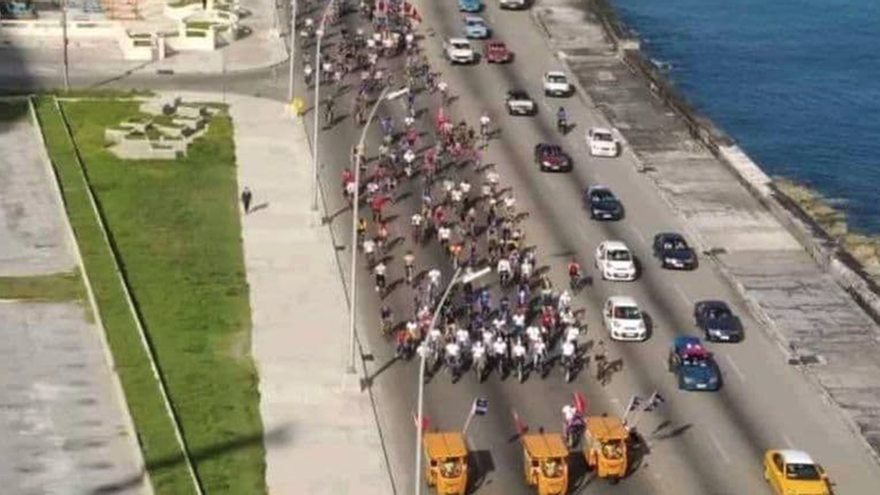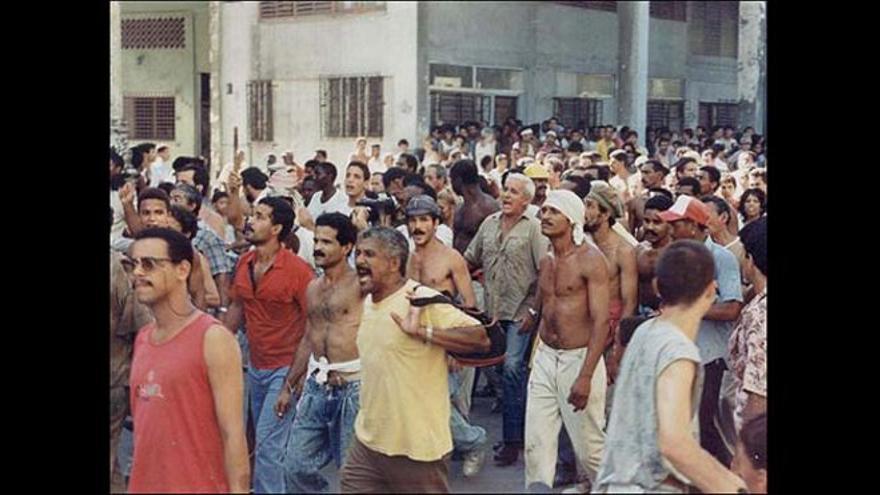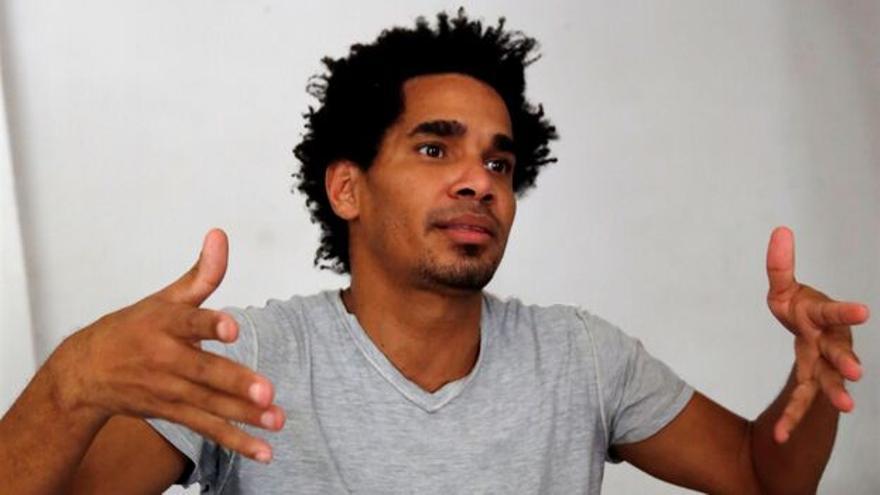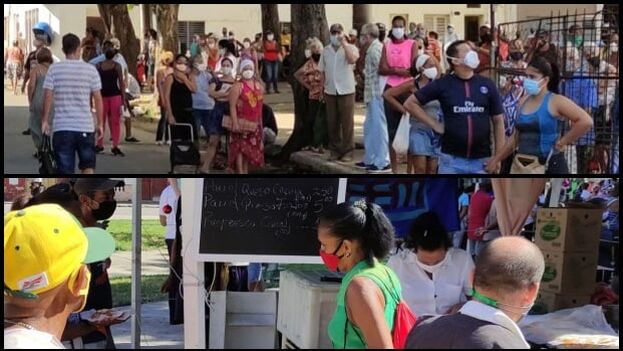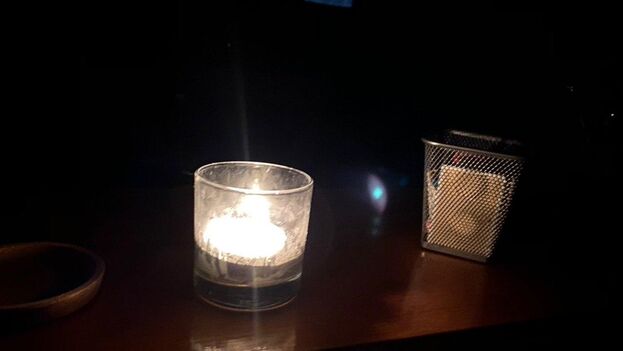
![]() 14ymedio, Havana, 8 August 2021 — “I haven’t been able to sleep all night, moving the fan so my child can rest,” Heidy Vázquez, from the Aguada de Pasajeros municipality in Cienfuegos, comments to this newspaper, speaking about a blackout that lasted six hours due to technical failures they are affecting the whole country.
14ymedio, Havana, 8 August 2021 — “I haven’t been able to sleep all night, moving the fan so my child can rest,” Heidy Vázquez, from the Aguada de Pasajeros municipality in Cienfuegos, comments to this newspaper, speaking about a blackout that lasted six hours due to technical failures they are affecting the whole country.
In the midst of the intense heat of August and at a time of great social sensitivity due to the resurgence in the Covid pandemic and the protests of July, the Electricity Union (UNE) announced this Saturday what many feared: technical problems in two thermoelectric plants, with their corresponding supply interruptions.
“Due to the fact that units 1 and 2 of the Lidio Ramón Pérez Thermoelectric Power Plant (CTE) with 420 MW and unit 5 of the Antonio Maceo CTE with 85 MW are out of service due to breakdowns, the electricity service is being affected by a deficit of generation capacity,” explained the state monopoly in a brief note that provoked angry criticism.
Among the main complaints, some users like Heidy Vázquez question the delay in the information. “They told us about the breakdowns when we were already suffering blackouts, so there is no way to plan,” she says by phone. “Also in this house we have Covid and we continue reading
In the Vázquez neighborhood “there are several houses with confined families because they were infected” and the power cuts that began last Friday “have also affected the water supply, so we are sick and unable to bathe or wash our hands as often they recommend.”
“Now they say they are breakdowns, but the service cannot be trusted for a long time. When it is not due to the generation deficit, then they cut the power because they are pruning trees, or the circuit is interrupted by just one light wind and all that, despite the very high price of electricity since the beginning of the year,” Vázquez complains.
Supply problems have increased since Friday afternoon, the UNE note says, and they will continue through Saturday, the text details. “It is expected that units 1 and 2 of the CTE Lidio Ramón Pérez will be incorporated into the National Electroenergetic System (SEN) tonight and early tomorrow, improving the situation as of tonight.”
However, reports that reached the editorial office of this newspaper confirm that the interruptions have continued in the center of the country and some Havana neighborhoods. In the town of Agabama, Sancti Spíritus, residents were without electricity from 7:00 pm until after two in the morning, as were large areas of the province of Las Tunas.
“We are working uninterruptedly to solve these breakdowns. We apologize for the inconvenience caused,” ends the note released this Saturday from the UNE, a company that until noon this Sunday had not reported that it had completed the repairs.
“Keep removing the current that is going to heat up the country again,” warned an Internet user on the entity’s Facebook account, a comment that others repeated in reference to popular outrage over the power cuts that were one of the reasons why the population of San Antonio de los Baños took to the streets on July 11, an example that was followed by the rest of the country that same day.
At the end of June the authorities announced a breakdown at the Antonio Guiteras Thermoelectric Power Plant in Matanzas. This problem made it necessary to move up the blackouts the Government had announced for this summer. Power outages of up to more than five hours affected all provinces for several days.
Shortly afterwards, the SEN reported the outages of several units of the Lidio Ramón Pérez de Felton thermoelectric plants, in Holguín, and the Renté 6, in Santiago de Cuba. Then, the UNE assured in a statement that “the actions to regulate the demand in the state sector were well organized,” but the power cuts were extended even in the early hours of the morning.
According to official figures, during the summer 400,000 tons of fuel are destined per month to Cuban thermal power plants to cover the electricity demand that increases at this time of year due to a greater use of fans and air conditioners, in addition to other consumption that skyrockets with high temperatures.
The residential sector represents 56% of the demand, while state and non-state companies account for 44%.
____________
COLLABORATE WITH OUR WORK: The 14ymedio team is committed to practicing serious journalism that reflects Cuba’s reality in all its depth. Thank you for joining us on this long journey. We invite you to continue supporting us by becoming a member of 14ymedio now. Together we can continue transforming journalism in Cuba.

